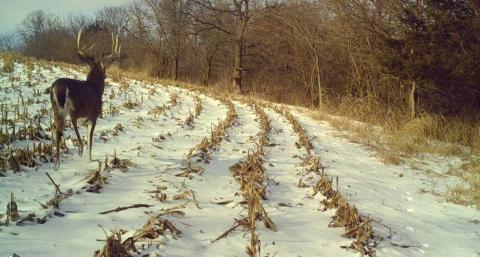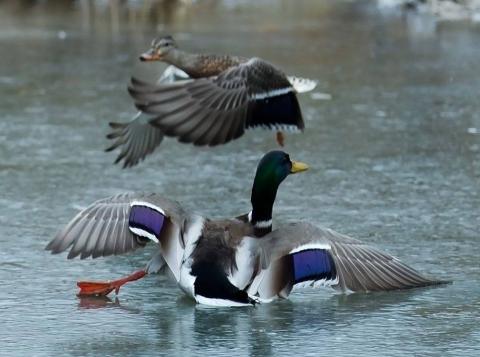Jeff Dennis | Originally published in GameKeepers: Farming for Wildlife Magazine
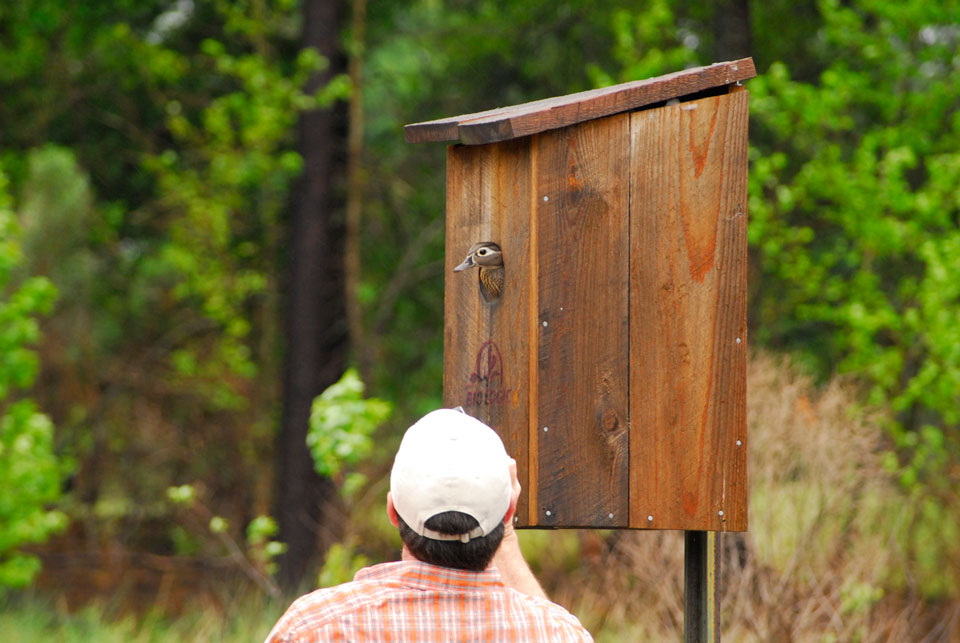
Most waterfowl managers already know that it sometimes takes a “trial and error” approach to figure out what works best in their area with their growing conditions and planting methods. Different crops and different planting approaches can also affect which hunting techniques will work best. Much the same way that gamekeepers figure out which clover grows well in their soil, which brassicas produce in low areas or on high ground, and what fire-breaks are the most valuable for starting back burns, it can take the same system of testing over time to identify the formula that best attracts and holds ducks to your waterfowl plot. A few tried-and-true waterfowl management techniques will help you reach your goals.
Rice: A Longtime Standby
Hunting over large quantities of rice is becoming a scarce proposition, though rice production still offers one of the best ways to concentrate waterfowl. For those who produce rice in small plots for waterfowl, they must be careful not to flood too early before opening day or the ducks may show up in droves and wipe out the food once it becomes “reachable.” The influx of ducks can be the equivalent of a fireworks display for managers. However, they can often deplete the rice in a hurry and then be gone for good.
Large rice production areas still exist in the Mississippi Alluvial Valley, the Gulf Coast of Louisiana and Texas, and in California’s Central Valley. These large areas are part of the USA Rice Federation, and in February of 2013, they formed a partnership with the nonprofit conservation organization Ducks Unlimited to raise awareness about the relationship between rice production and waterfowl. These working rice lands represent a significant portion of the areas where waterfowl overwinter each year.
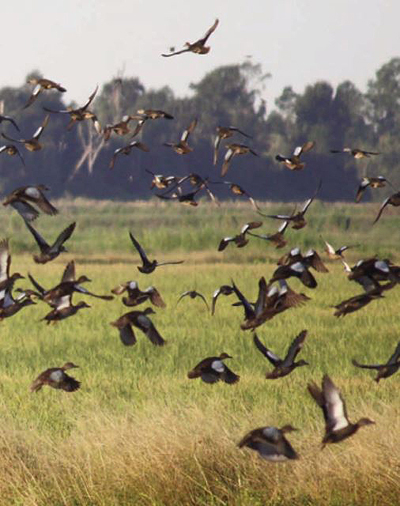
During my visit in October of 2013 to Southwest Louisiana, I was able to witness one of the large rice operations at Grosse Savanne. Field Operations Manager Doug Miller represents DU on the Rice Stewardship Partnership and has been fine-tuning the Grosse Savanne rice fields for the past 12 years. Their 2,000 acres of rice production annually attract wads of waterfowl and speckle belly geese too, and during my visit, thousands of blue-winged teal were on site for a visit during their southward migration.
Of course, challenges in the form of water shortages and increased agricultural costs threaten rice production, which doubles as top-tier waterfowl habitat. While operations like Grosse Savanne can conduct “pay to hunt” operations to defray costs, it is my observation that any rice crop can provide far more to the ecosystem than just habitat for waterfowl, and wildlife managers ought to keep rice production efforts in their plot playbook in order to find out for themselves.
Coastal Plain Gameplan
Plantation manager Tadpole Baldwin is native to Colleton County in South Carolina, and his family has a specific tradition of managing for waterfowl. The 2014 menu for migratory ducks at the private plantation he oversees will be a mix of approximately 600 acres of corn and 2,500 acres of moist soil management. Whereas one may not manipulate any corn crop and remain legal for hunting waterfowl, the mowing and burning of natural vegetation is considered a common management practice and that area remains legal to hunt. This management routine can produce billions of native seeds for your waterfowl to feast upon and is legal to hunt over.
“The corn crop isn’t flooded using the Edisto River until just days before the waterfowl season comes in,” says Baldwin. “Nature will then take its course over time and degrade the stalks to where the corn is either blown down to where the ducks are, or perhaps the ears will simply sag enough to where they can stretch out and reach it.”
While the mere sight of flooded corn is likely to signal waterfowl to drop in, this coastal area has unique food sources that may have an even more powerful effect. Baldwin continued, “We’ll have about 1,000 acres of redroot flat sedge that is a natural food source for dabbling ducks. The redroot prefers the areas that have peat in the soil complex, and the fall panicum grasses do better where we find mud and silt from the river.” The mowing and burning practices are timed for the intersection of duck season and when the seeds reach maturity.
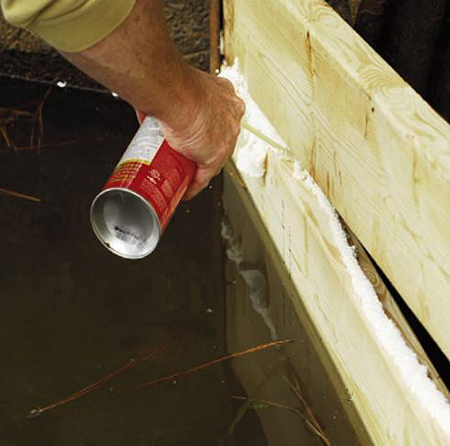
able to drain the pond and then regulate the water level with a few
riser boards. This will allow you to plant crops like Guide’s Choice,
corn or buckwheat and then flood the crop once waterfowl season
arrives.
Farm Ponds and Prairie Potholes
Two of the primary ducks in the game bag for small property owners are the wood duck and mallard, and it’s likely to stay that way. Seasonally flooded wetlands like bays, creeks and other pocosins (pocosins are wetlands that form in places with very deep peat) can attract dabbling ducks scavenging for acorns and other natural food sources. Identifying these areas is the first step, and then a supplemental food crop like Japanese millet, chufa, or Guide’s Choice can be planted, usually in an area that will only be partially flooded. The waiting game for wet weather is the only hitch since it’s not always a safe bet that Mother Nature will provide enough precipitation in time for opening day. Still, this kind of contingency can keep gamekeepers attentive to subtle changes in the water table which can greatly affect these wood duck ponds.
If you have an inlet to the farm pond, sometimes risers can be installed on the culvert and the water can be drained and regulated just like it is with a traditional waterfowl impoundment. In this case, dry ground plantings like corn, millet, sorghum, buckwheat or chufa can be planted and then flooded when hunting season arrives. If crops seem like they may be difficult to grow, simply disking the soil can release tons of seed-producing native plants that waterfowl love.
Aquatic plants like duck’s meat (duckweed), numerous tubers, arrowhead (also known as “duck potato”), or wild celery can work wonders on attracting loads of waterfowl. Some, such as duck weed, are as easy to plant as pitching them in the water. These aquatic plants can be a great addendum to grains and can extend the palatability timeframe of your waterfowl area, so they’re always a good addition to your waterfowl management plan.
No matter what you are hunting over, it’s an exciting process to witness the food and water combine to provide the catalyst that attracts ducks. There is never a guarantee when making final preps for waterfowl season, and so there is always a pleasant surprise when the ducks actually arrive. How long the ducks stay is directly attributed to Mother Nature and the quantity and quality of the food source. Each duck harvested from your plot makes you take notice of what is working and what isn't. It helps you to make future plans and finetune your property to attract and hold more waterfowl year after year.
Jeff Dennis is a longtime outdoorsman. Read his blog at www.LowcountryOutdoors.com.


















